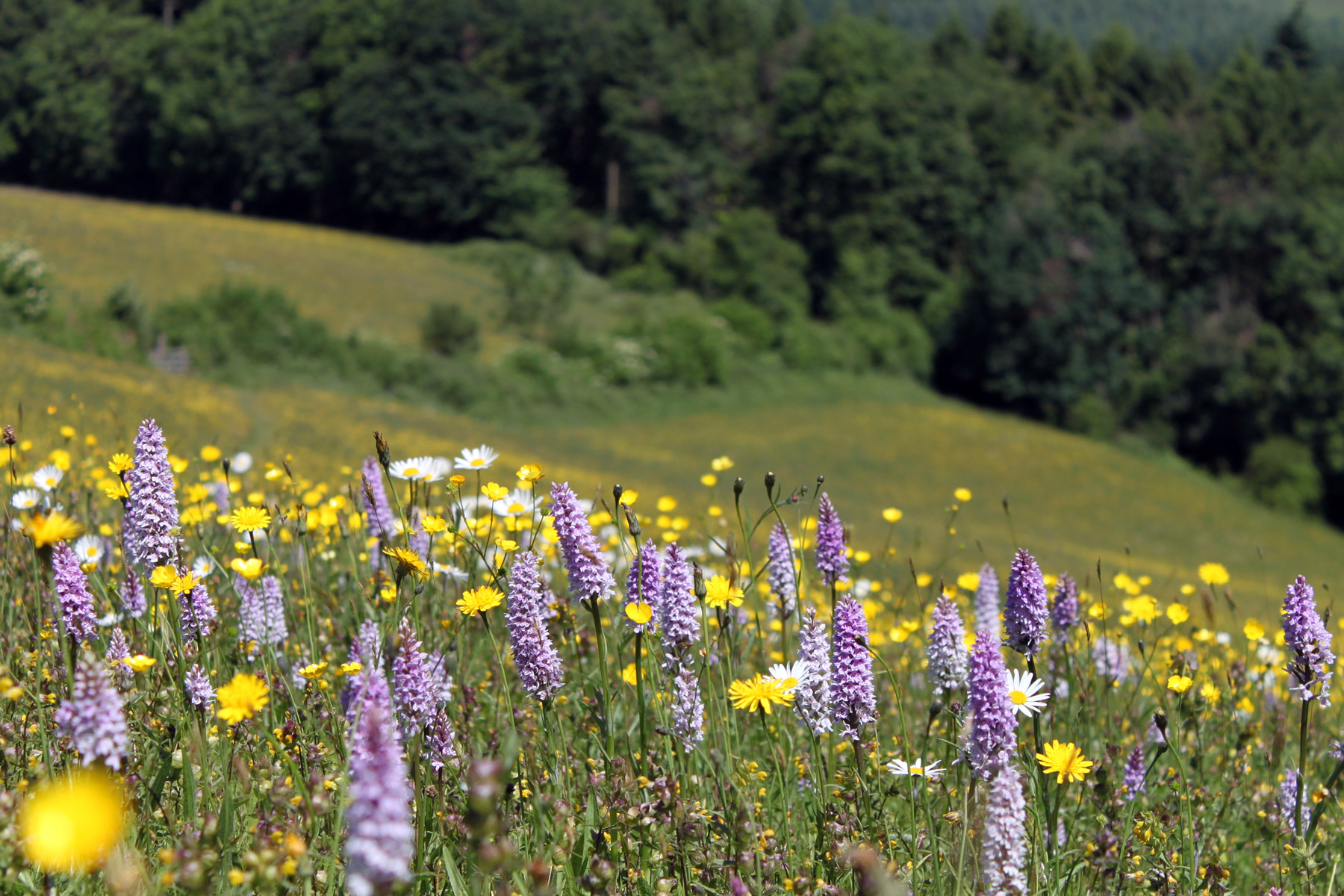


 Over 30 meadow owners enjoyed the chance to hear first hand about meadow restoration at Brockhampton Cottage. Peter Clay first started in the area near the drive with a bespoke wildflower mix from a seed supplier and added plant plugs to create a designed wildflower meadow based on typical Herefordshire plants. Since 2013 the work has evolved to use local provenance seed and a range of techniques vastly to increase the acreage of wildflower meadows into adjacent species poor grassland.
Over 30 meadow owners enjoyed the chance to hear first hand about meadow restoration at Brockhampton Cottage. Peter Clay first started in the area near the drive with a bespoke wildflower mix from a seed supplier and added plant plugs to create a designed wildflower meadow based on typical Herefordshire plants. Since 2013 the work has evolved to use local provenance seed and a range of techniques vastly to increase the acreage of wildflower meadows into adjacent species poor grassland.
There is an information sheet Meadow creation and restoration training summary with links to further topics discussed during this event
Tops Tips from the 3 speakers Peter Clay, Mark Wood and Peter Tierney include
- Meadows are dynamic and change naturally from year to year – even without any changes in management and enhancement is very weather dependent work.
- Mechanical or chemical weed control is crucial to meadow management / enhancement / restoration / creation. Weed control is necessary before starting a project for best results and must continue during and afterwards to enable the wildflowers to flourish.
- Enhancement projects often take years to achieve results, with repeated interventions needed depending on initial results. Very unlikely to get good results with a one-off method.
- Yellow rattle is a key tool to help prepare a site for other wildflowers to flourish. More can be introduced as the project progresses to improve the outcome
- Make the most of any areas with nutrient poor top soil or where top soil has been stripped as quick results can be achieved.
- Results are possible on typical Herefordshire clay loam or sandy clay loam soils but require careful attention to detail and good planning
- Know what you have before you start and monitor the changes in plants over the following years. Herefordshire Meadows can arrange plant ID and grassland assessment training.
- SSSIs and other designated sites are not suitable for enhancement work and would need consent from NE in any case. Some Agri-environment scheme options require / allow enhancement with local provenance seed (check your scheme prescriptions) and others do not (see NEWS). Commercial seed mixes intended for arable field margins and arable reversion projects may not be suitable for enhancing existing grassland. The use of exotic and non local plants is more appropriate in a designed garden landscape than in the wider farmed landscape.
- Take advice during the planning stage to increase the chances of success and save costs in the long run
- There is a huge amount of Information available to help you avoid common pitfalls but as every meadow is different there is no recipe that covers all sites. Discover the principles and adapt them for your project.
Peter Tierney’s pedestrian equipment works well in awkward areas among trees and shrubs and to move green hay across the site from species rich areas to species poor areas
For more details about green hay strewing see the NEWS post on the visit to Peter Tierneys in July 2018 and the information sheet link
A brush seed harvester has been also been used to gather seed from the now species rich areas of the site to enhance the species poor parts
Farm machinery has been used by the estate staff on larger areas. Loose baling and spreading the chopped hay with a muck spreader has given good results over much larger areas.













